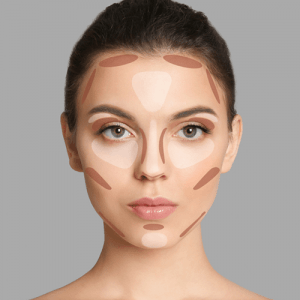As a plastic and reconstructive surgeon for over 35 years, I understand the stigma many men feel about facelift surgery. However, I also know that facelifts for men offer a chance to increase your confidence and empower you to look the age you want. Over the years, I’ve performed successful facelift surgeries for men of all ages. If you want to enhance and revitalize the aesthetics of your face, you may be a great candidate for facelift surgery.
What is a Facelift?
A facelift is a surgical procedure to restore youth to the face by repositioning tissue and removing surplus skin. There are many different varieties of facelifts, customizable to meet your specific needs and goals.
I most commonly use the composite facelift procedure. This approach typically produces longer-lasting results as it considers the aging process of the face holistically. With a composite facelift, the skin, muscle, and fat tissue are all addressed as part of the surgery to achieve the aesthetic goals for the patient.
Facelifts are a solid option for men that want to restore the jawline and other facial features below the lower eyelid. One goal of many men is to reduce the appearance of jowls and sagging in the face. A facelift helps achieve this goal.
Who Makes a Good Candidate for a Facelift?
A facelift is not a good option for every man. In fact, it is important for facelift surgery that the patient is in good health. A facelift is a surgical procedure requiring general anesthesia, which may cause complications for individuals with poor health. Another starting consideration is the condition of the patent’s skin. Patients with decent skin achieve better and longer-lasting results after facelift surgery.
If the main issues for the patient are the aging of the neck or jowl, men can expect excellent results from a facelift. Sagging in the neck and jowl are byproducts of gravity. Facelift surgery addresses these unwanted results well.
However, facelift surgery doesn’t address some other facial concerns as well. For example, aging features created by muscle animation, such as the nasolabial fold or laugh lines, do not stand up long term with a facelift. For this issue, other interventions, like fillers or neuromodulators, offer better results.
We work with our patients to provide the best options to meet their needs. We offer honest and quality information to allow you to make an informed decision about the best procedure to address your aesthetic facial goals and overall health.
Is a Partial Facelift an Option?
As we discussed, there are many different types of facelifts, dozens, in fact. A full facelift refers to the correction of the facial features from the impact of aging from just below the lower eyelids and extending down to the collarbone. Not every patient needs a full facelift, although, many patients find a full facelift offers the best approach to create the overall look the patient wants.
Some patients only need to address specific parts of the face. In these cases, an upper or lower facelift may produce the desired results. An upper facelift deals with the cheeks and not the neck while a lower facelift addresses a saggy neck and chin.
How are Facelifts for Men Different?
Facelift surgery varies slightly for men and women. This is one reason it is vital to work with an experienced and knowledgeable surgeon. When selecting a surgeon, ask about the number and types of facelifts for men.
With facelifts for men, the incisions are slightly different than for women. This is primarily because of considerations for the beard in a male. In addition, the operation for male patients typically takes a bit longer because men have larger faces. Otherwise, the recovery time and process do not differ for men and women.
Should You Combine a Neck Lift and a Facelift?
Most patients, male or female, age synchronously. This makes a full facelift the best option for most patients. A mini or upper facelift that addresses the lower lids down to the jawline, is occasionally an option if the neck is not an issue.
Conversely, if only the neck is showing signs of aging, a neck lift or cervicoplasty might be enough. However, these are rare situations. In almost all cases, the full facelift, where the surgery addresses the face and neck simultaneously, provides the best results. Plus, it is more affordable and better for your overall health to address both issues at once versus having a second surgery later.
How Long is the Recovery?
Most patients are presentable, with recovery from swelling and bruising, within two weeks after a facelift. Naturally, there are exceptions. However, whether a patient is comfortable resuming normal social interactions depends on their specific personality.
Medically, most patients can go about their business the next day with restrictions on exercise and intense physical activity for two weeks. The full recovery takes a few months for all swelling and impact from the facelift surgery to resolve.
As with any outpatient surgery requiring general anesthesia, patients do need reliable transportation after the surgery. You should not drive and may need assistance at home on the day of the surgery.
Choosing the Right Surgeon
Not every plastic surgeon has extensive experience with male facelift surgery. While the process is similar to female facelift surgery, there are differences that matter to achieve the right outcomes. I’ve practiced plastic and reconstructive surgery for over 35 years, including facelifts for men.
Over the years, I have continually adjusted my technique for better results based on experience and research. Facelift surgery is one of my favorite operations to perform, both technically and for the joy of seeing a patient’s boost in confidence. I am passionate about helping people realize their full potential through the benefits of facial surgery.
Contact me to schedule a free consultation about your aesthetic goals through a facelift. I work with each patient to determine the best procedure to meet your objectives while also considering your overall health.


















